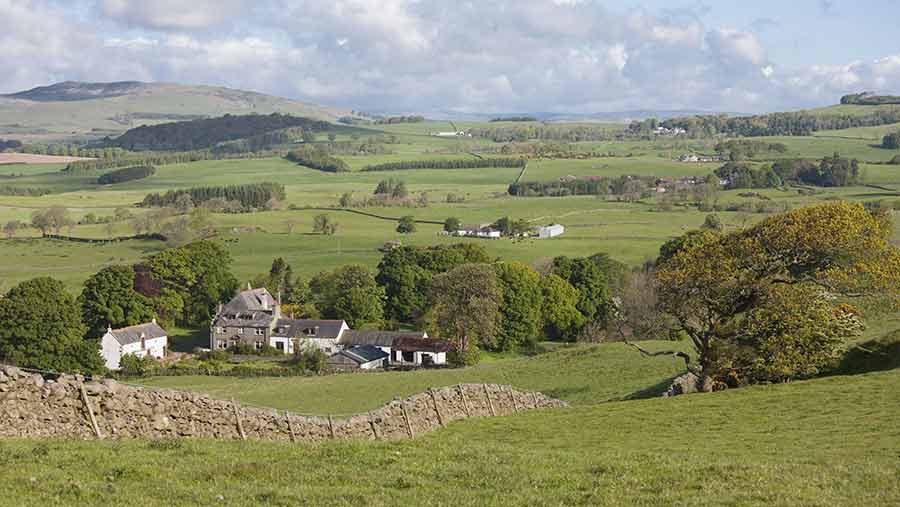Woodland creation grant launched for Scottish sheep farmers
 © Design Pics Inc/REX/Shutterstock
© Design Pics Inc/REX/Shutterstock An upland grant combining woodland creation and road construction funding is now available to Scottish sheep farmers.
Upland ecology experts and sheep sector leaders say the Sheep and Trees scheme can be used to reduce wintering costs, improve farm viability and ultimately “keep lights on in the glens”.
The Scottish Government scheme was launched at the Highland Show last week (22-25 June).
Rather than simply hitting Forestry Commission Scotland (FCS) targets of increasing tree plantings up to 15,000ha/yr by 2025 (4,600ha in 2015/16), upland sheep farmers are being urged to optimise woodland creation for their own purposes.
See also: How planting trees on farms offers extra income stream
FCS reports show tree planting can reduce wintering costs by £5/ewe through shelter belts and outdoor lambing.
This was the message of National Sheep Association Scotland chairman John Fyall, who told Farmers Weekly that Forestry Commission Scotland’s drive to hit tree planting targets “is not going to relent”.
Mr Fyall said: “This is a useful scheme, particularly for hill farms of some scale and if trees are planted appropriately they can improve the environment the sheep are in, making best use of shelter belts, areas of unproductive land, separating hefts and using the access portion of the grant to get better access to put silage out.
About the scheme
Sheep and trees
- A partnership between National Sheep Association (NSA) Scotland, National Farmers Union Scotland, Forestry Commission Scotland and the Scottish Government
- Eligible land must allow farming on a “significant part of farm”
- Planting must achieve between 10-50ha of productive conifer
Woodland creation rules
- Initial payment: £/ha (for example, conifer £1,920, broadleaves £2,280, natives £1,840)
- Annual payment rate for weeding/thinning trees £/ha/year for five years
- Funding available for access road construction (10ha could equal a 300-metre track)
“Compared with the rest of the UK, the Scottish Government is well ahead in terms of reforestation and woodland creation.
“We have to make sure these schemes get the right kind of commercial forestry onto farms that will work for commercial farmers.”
Agreed design
Any successful woodland applications must fall within an “agreed design” framework, advised Hugh Chalmers of the Tweed Forum.
He said a thorough assessment of farm applications would be led by SEPA (Scottish Environmental Protection Agency), verifying the location and species of trees on archaeological, soil health, hydrological and ecological grounds.
“Using trees to complement upland sheep farming might help keep lights on in the glens of Scotland,” he said.
“Trees can manage the movement and flow of sheep around the landscape for the farm’s benefit and water through the landscape for public benefit,” he added.
Planting benefits and tips
- Shelter belts can improve lambing performance and reduce wintering costs
- Riparian woodland planting can reduce poaching
- Use trees to fence sheep away from drowning in wet, boggy areas
- Smaller 2-5ha blocks may have more environmental and farming value
- Larger areas of woodland, if approved, will need less fencing
- Intersperse blocks of productive forestry with native trees
Source: Hugh Chalmers, Tweed Forum, and Davy MacCracken, SRUC Professor of Agricultural Ecology
